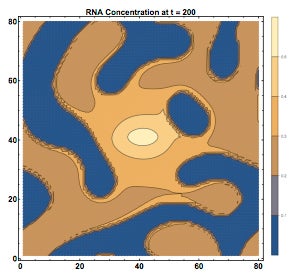Jack Treado wins Poster Prize at NHS Undergraduate research conference
Posted in News Story
Jack (John) Treado C’16, a Senior Physics Major, won a prize at the school of Nursing and Health Studies undergraduate research conference held at Georgetown University 14-15 April 2016.
The Georgetown University Undergraduate Research Conference , founded within the Department of Human Science at the School of Nursing & Health Studies, is an opportunity for undergraduate students to present their research efforts. The first conference was held in 2003. The conference is a combination of student investigations, faculty research, and keynote speakers, whose main goal is to highlight the research efforts of undergraduate students.
Jack won the award for Excellence in Poster Presentation for his work, entitled “Phase Separation in the Cell Nucleus”, which formed the basis of his Senior Thesis under the supervision of Professor Peter Olmsted.
Abstract: The nucleus of the cell is a mixture of co-interacting chemical species. Instead of distinct sub-organelles, nuclear processes are carried out by dynamic membrane-less structures that maintain a coherent shape and function only for a short time. This formation and dissolution has been recognized as a phase separation phenomenon where nuclear bodies are formed out of the components of the nucleoplasm. However, exactly how these nuclear bodies form is not well understood. In particular, the effect of protein – RNA interactions on the phase behavior of nuclear bodies is still an open question. Here we present a numerical method to simulate a simplified version of this complex dynamical system. We used the Cahn-Hilliard theory for spinodal decomposition to model the time evolution and phase separation of concentrations of mRNA, proteins and the surrounding nucleoplasm. We found that the presence of RNA initially increased the ability of nuclear bodies to form, which indicated that RNA transcription affected those sub-organelles that in turn play a role in the transcription process. The existence of this feedback loop gives insight into the thermodynamic origin of nuclear body assembly. Future work will also include the effect of ribosomal translation and increasing protein concentration on the transcription feedback loop.

